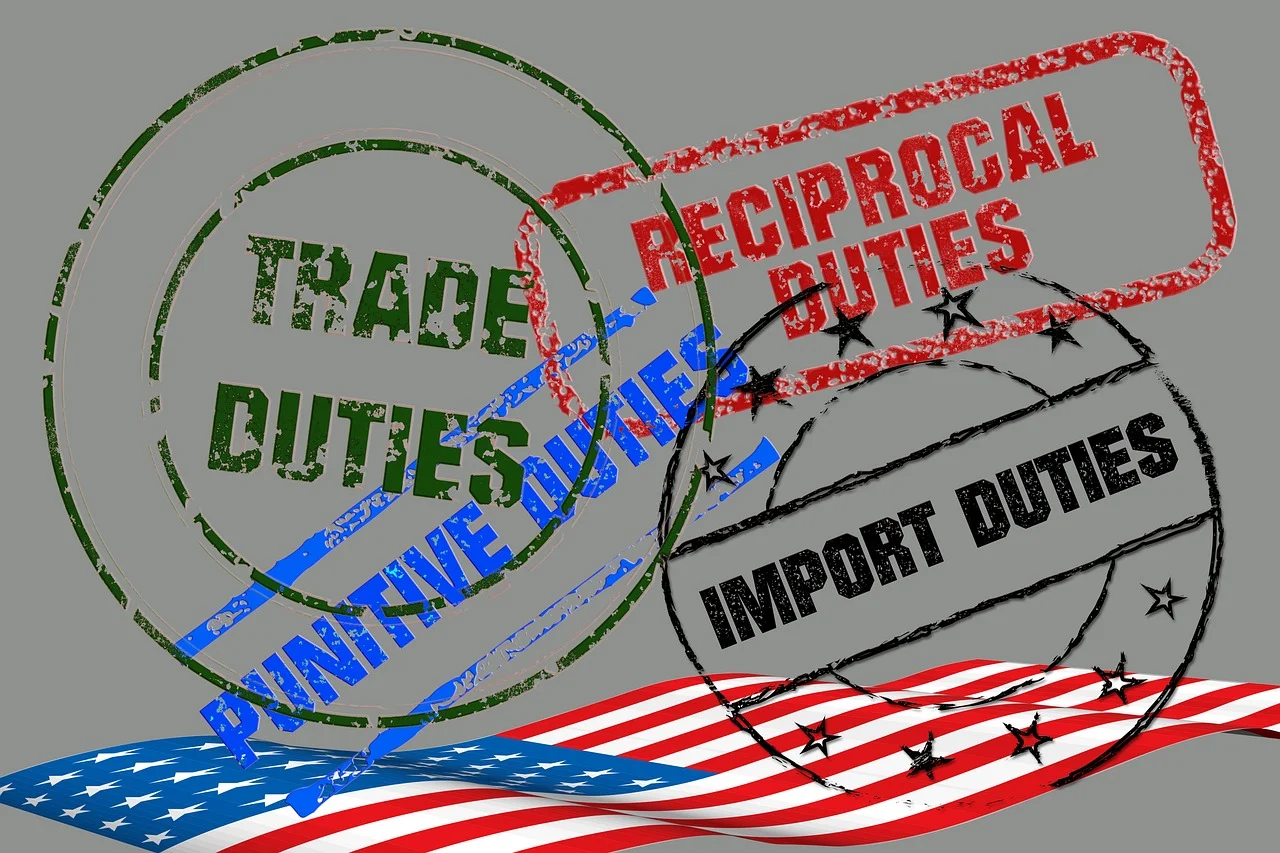
Tariffs are a tax. There are three types of tax system, each with its own pros and cons.
First, there is the flat tax. In a flat tax system everyone pays the same rate of tax. If an income tax is flat, everyone, regardless of income level, pays the same rate (percentage of income) in tax. The sales tax in the United States is an example of a flat tax. Everyone pays the same sales tax rate for purchasing the item, regardless of income level or amount purchased.
Next we have the progressive tax system. In a progressive tax system the rate of tax climbs with ability to pay. The higher your income, the higher your marginal tax rate. Income taxes in most countries are progressive. Your tax rate is higher for $1,000,000 of income than for $100,000 of income. People earning $20,000 pay an even lower tax rate. Often there is a level of income not subjected to the income tax.
Finally we have regressive tax systems. Under a regressive tax system taxes go down the more you have. There are few regressive tax systems in effect around the world due to their punitive nature. Forcing someone to pay more in taxes just because they earn less is viewed as unfair. Exempting the wealthiest in a society from tax is also considered unfair by most.
The progressive tax system is considered the most fair form of tax structure. For income tax, the more your income, the higher your tax rate. But that does not stop flat tax structures from rearing their head. Some consider the value-added tax a flat tax. Sales taxes in the United States are a flat tax specific to each locality.
Regressive tax systems are usually avoided not because they are unfair, but because they have a disproportionately negative effect on economic activity since people with lower levels of wealth spend more of what they earn or have than the wealthiest individuals in a society.
Tariffs are a regressive tax system that historically struggled with providing ample funding to the government while often harming economic activity.
The goal of tariffs is to protect domestic markets from foreign producers. Targeted tariffs can accomplish this goal. Smaller tariffs tend to have a muted effect on economic activity and can benefit domestic businesses while only marginally increasing consumer prices.
Large broad-based tariffs are a different story. Large broad-based tariffs do not encourage a foreign producer to modify their behavior or protect domestic producers as a large broad-based tariff rates effectively lock foreign producers out of a market. Often, the government levying a large broad-based tariff does so to raise money for the government. Historically this has not worked well. As with income taxes, there is a level where the government maximizes revenue with the least disruption to economic activity. The higher the tariff, like the higher the income tax rate, the more likely negative economic consequences are caused.


The Regressive Tariff Tax
The best way to see how tariffs are a regressive tax is with an example.
Suppose we have a simple 100% tariff on all goods entering a country. Products that cost $100 now cost consumers $200. Half of the products price is tariff tax.
Now suppose we have an individual earning $50,000 per year. Let’s assume she saves 10% of her income and no other taxes are considered. Also assume that all spending is on items assessed the tariff.
Our individual will spend $45,000 per year of which $22,500 is tariff tax. Her tariff tax rate is 45% of income.
$22,500/$50,000 = .45
Now let’s take a look at an individual with a $1 million annual income.
Someone earning $1 million per year is likely to spend less of a percentage of her income and save and invest more. In our example we will assume she spends $300,000 each year and assume every dollar spent is on tariffed items.
If she spends $300,000 then she will pay $150,000 in tariff tax. Much more than the $50,000 income per year person. But the tax is much smaller as a percentage of income.
$150,000/$1,000,000 = .15
The million dollar income pays only a 15% tariff tax compared to income while the $50,000 person pays a whopping 45%!
Of course, this is a simple example. Not all purchases will be tariffed items. Consumers can substitute. Domestic businesses will have opportunities to raise prices without harming competitiveness with foreign producers. Nothing happens in a vacuum.
Tariffs are a consumption tax. Don’t want to pay the tax? Then don’t buy the item. This is the opposite from the income tax where income is taxed whether spent or not. (However, income taxes often provide incentives to save and invest.)
The big problem with a consumption tax is that the poorer a person is the larger the percent of their income they need to spend to survive. The millionaire can live on $50,000 per year as well as the person earning $50,000 per year. The millionaire will probably spend more, but also save and invest more, generating future streams of income.
Other forms of taxation can increase the fairness of an entire tax system, if redistributed from the wealthy to poor. Other taxes can provide a living income to people below a certain income level.
Almost any tax can be considered regressive on some level. The wealthier you are the easier it is to pay a large tax. Poor people need a certain amount of food to live. Someone earning a hundred times more will not require 100 times more food to live.
Tariffs (all taxes actually) are more complicated than a simple example. The goal of the example above is to show how tariffs work in a vacuum at the personal level. Many other factors are involved. But if you know the framework holding up tariffs the better prepared you are to reduce their effect on you.








